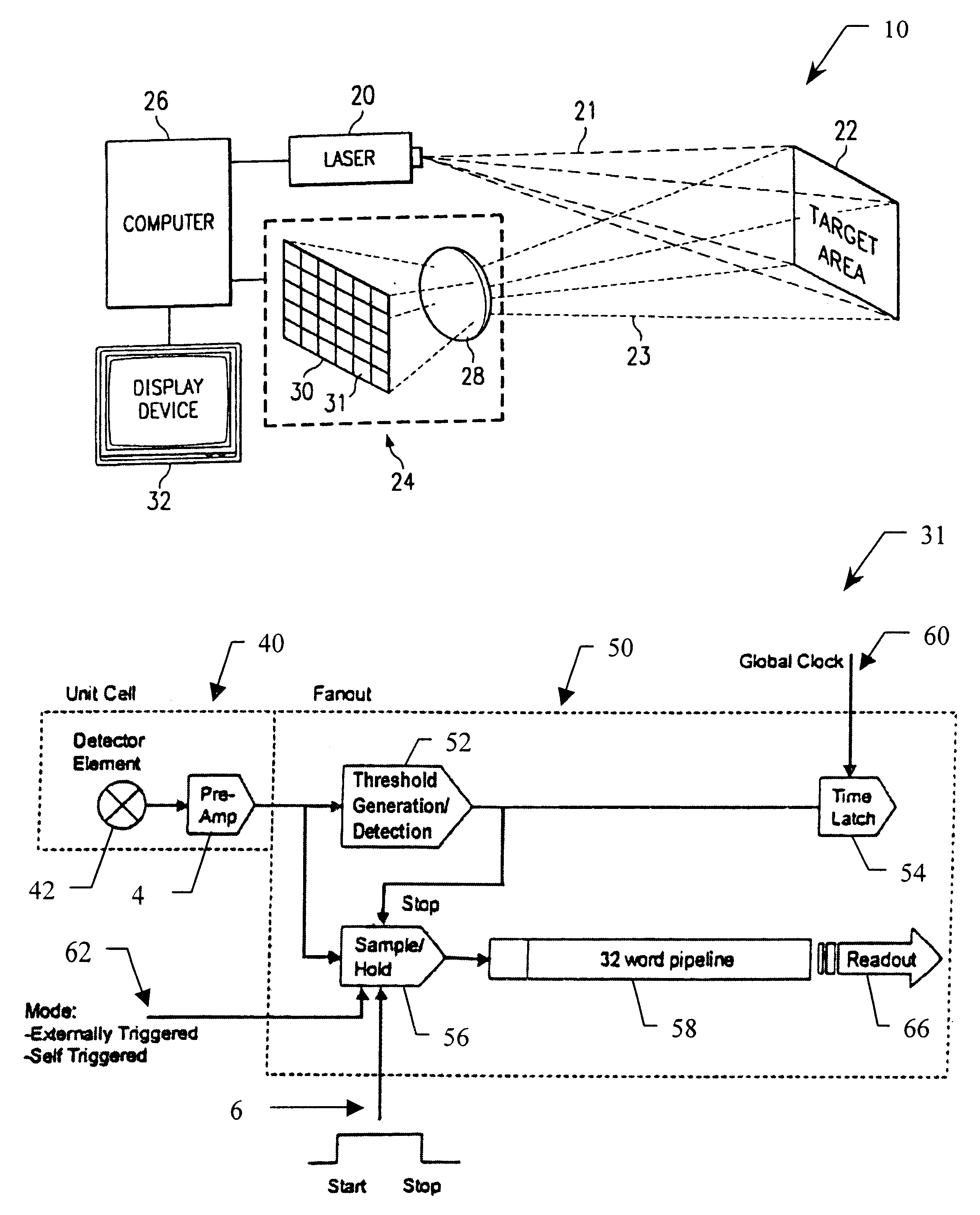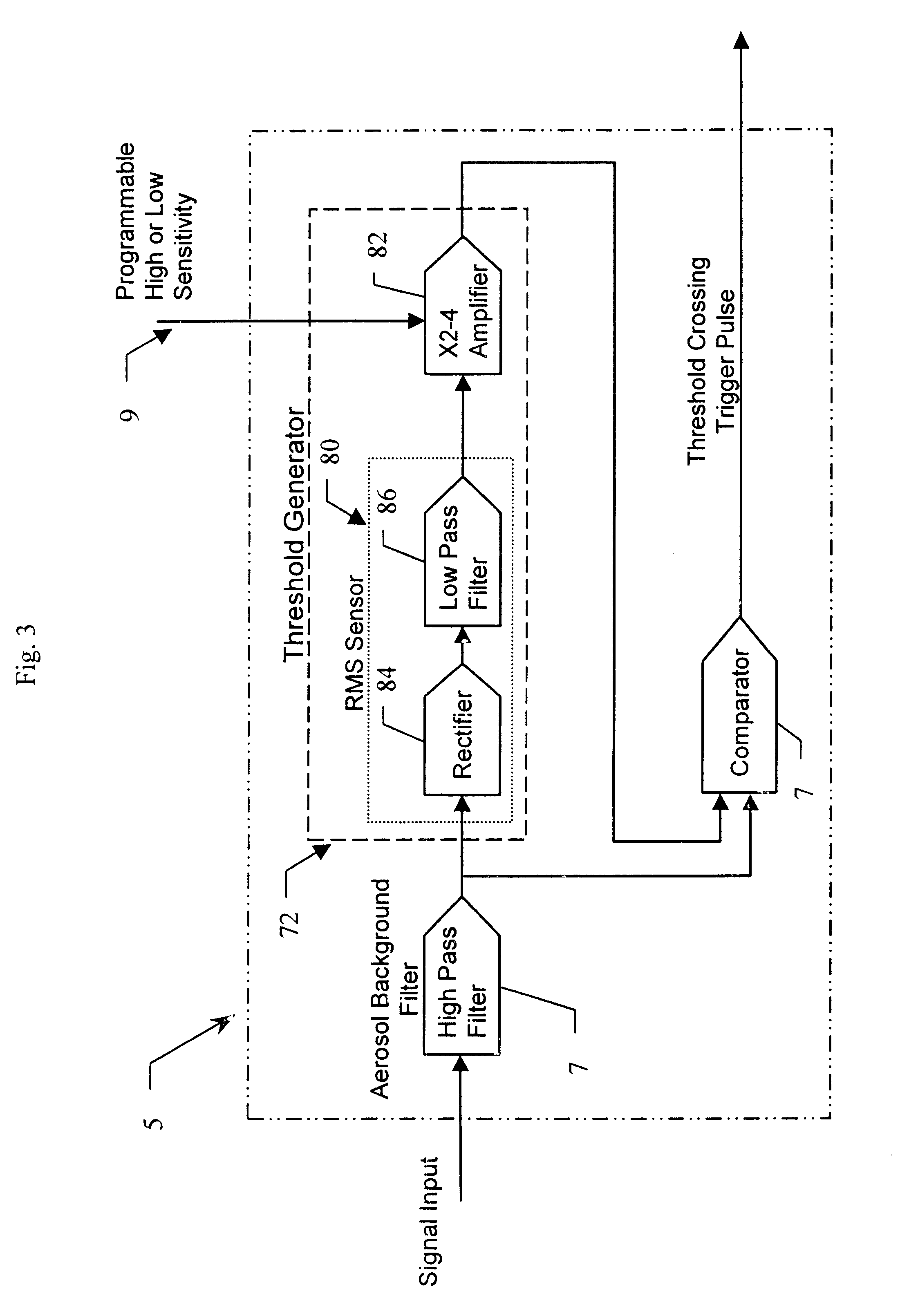Dual mode adaptive threshold architecture for 3-D ladar FPA
a threshold architecture and ladar technology, applied in the field of imaging systems, can solve the problems of varying noise levels, unable to guarantee that every detector on the array is going to be exactly the same, and requiring more complex signal processing than current detector readout electronics can handl
- Summary
- Abstract
- Description
- Claims
- Application Information
AI Technical Summary
Problems solved by technology
Method used
Image
Examples
Embodiment Construction
Illustrative embodiments and exemplary applications will now be described with reference to the accompanying drawings to disclose the advantageous teachings of the present invention.
While the present invention is described herein with reference to illustrative embodiments for particular applications, it should be understood that the invention is not limited thereto. Those having ordinary skill in the art and access to the teachings provided herein will recognize additional modifications, applications, and embodiments within the scope thereof and additional fields in which the present invention would be of significant utility.
The present invention is an integrated signal processor for a detector in a focal plane array which internally compensates for variations in detector gain, noise, and aerosol backscatter. This invention is designed for use in a flash ladar system such as that described in U.S. patent application Ser. No. 09 / 330,953 entitled METHOD AND DEVICE FOR IDENTIFYING AN O...
PUM
 Login to View More
Login to View More Abstract
Description
Claims
Application Information
 Login to View More
Login to View More - R&D
- Intellectual Property
- Life Sciences
- Materials
- Tech Scout
- Unparalleled Data Quality
- Higher Quality Content
- 60% Fewer Hallucinations
Browse by: Latest US Patents, China's latest patents, Technical Efficacy Thesaurus, Application Domain, Technology Topic, Popular Technical Reports.
© 2025 PatSnap. All rights reserved.Legal|Privacy policy|Modern Slavery Act Transparency Statement|Sitemap|About US| Contact US: help@patsnap.com



